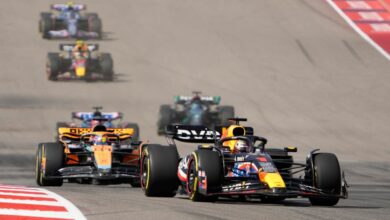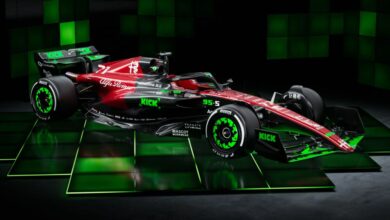The New Koenigsegg Jesko Can Hit 300mph
Bugatti seemed adamant to win this top speed war when they released the Chiron. For months they were exclaiming how their car will be the first to reach 300mph and wipe the Hennessey Venom F5 off the map. But quickly we noticed there was an issue. Why didn’t they just… do it? It turned out that it was something to do with the tyres.
There simply wasn’t the rubber available to whoosh the obese Chiron to the 300 mark, and eventually, they just gave up. They said they were no longer in the top speed game and that they were, from now on, focussing on another niche. So we looked to Hennessey.
They said that they didn’t need special tyres because their car was much lighter than the Chiron. But, that was last year, and we haven’t heard anything since. They seem to be more interested in cumbersome 6x6s than proving that they can actually do it. Probably because… they can’t.
There have been countless other small companies threatening a sudden take over of the hypercar niche, but obviously they were exaggerating to try and gather some funding. So who do we look to now? Maybe the current record holders, Koenigsegg?
That’s right. The Swedes have returned and this time they’re shooting for the 300mph target with their latest car, the Jesko. It’s named after Christian von Koenigsegg’s father as a thank you to helping him set up the company when he was a wee-22 year old, but before we get to gooey, let’s discuss this engine.
It’s the Agera’s 5.0-litre twin-turbo V8, but now features a flat plane crank that’s been lightened by 5kg over the older 90 degree one. This change has changed the exhaust note substantially according to Christian. Adaptive rubber engine mounts are able to absorb the extra vibrations from the new crank, and a 20-litre carbon tank fires jets of air into the turbos at 20 bar to help them spool faster and therefore reduce lag.
Come on then, the big numbers, what are they? 1,262bhp with 95 octane unleaded, and 1,578bhp and 1106lb ft of torque if you use the sweet-smelling E85 biofuel. Horsepower has never smelt so good. However, getting this power to the wheels turned out to be quite the challenge. Their gearboxes couldn’t handle the power so, they just made one from scratch.
It can not only handle the power, but it’s smaller, lighter (by 90kg), and much smarter than the Chiron’s. It’s a 9-speed multi-clutch transmission that they’ve dubbed the Light Speed Gearbox. It has 3 cogs at the front and 7 at the back resulting in 21 different ratios. For this car, they’re using two sets of three, with 6 clutches that can select any combination at any time. There you go, breathe, that’s difficult to imagine isn’t it?

Hold down the left flappy paddle and the car will automatically put you in the best gear for acceleration. Christian calls this feature UPOD, or Ultimate Power on Demand. And because the acceleration of this car is going to be so powerful, they’ve added another horizontal Triplex damper at the front to stop squatting. It will also counter the extreme downforce on the front of the car.
The carbon tub has been made larger, four-wheel steer added, and it has Koenigsegg’s lightest wheel yet weighing only 7.7kg at the rear, and 5.9kg at the front. And if you’re looking at the pictures and thinking there’s a lot of wings (drag) for a car that’s supposed to go very very fast, then you’d be right. This is the high downforce version, which is able to create 800kg of it at 155mph, 1,000kg at 171mph and 1,400kg at its yet-unknown top speed. That’s 30% more than the One:1 making it the most downforce-y car from the Swedish company, yet. However, with a weight of 1,400kg, it can’t drive upside down (ha bloody ha).

Racey, yes, but it still has all the mod cons inside to make it a mean GT car. Wireless charging, hydraulic struts for the boot, doors and rear clamshell at the push of a button, Apple CarPlay etc. It has it all. It even has a screen that stays upright in the centre of the steering wheel that tells you what’s going on. Nifty!
125 of these Jeskos will be built at a rate of 50 per year. And no, we can’t afford one. They’ll be sold at around $3 million each plus taxes, but next year we could be seeing a hybrid at only $1 million. That’s what you call progress.



